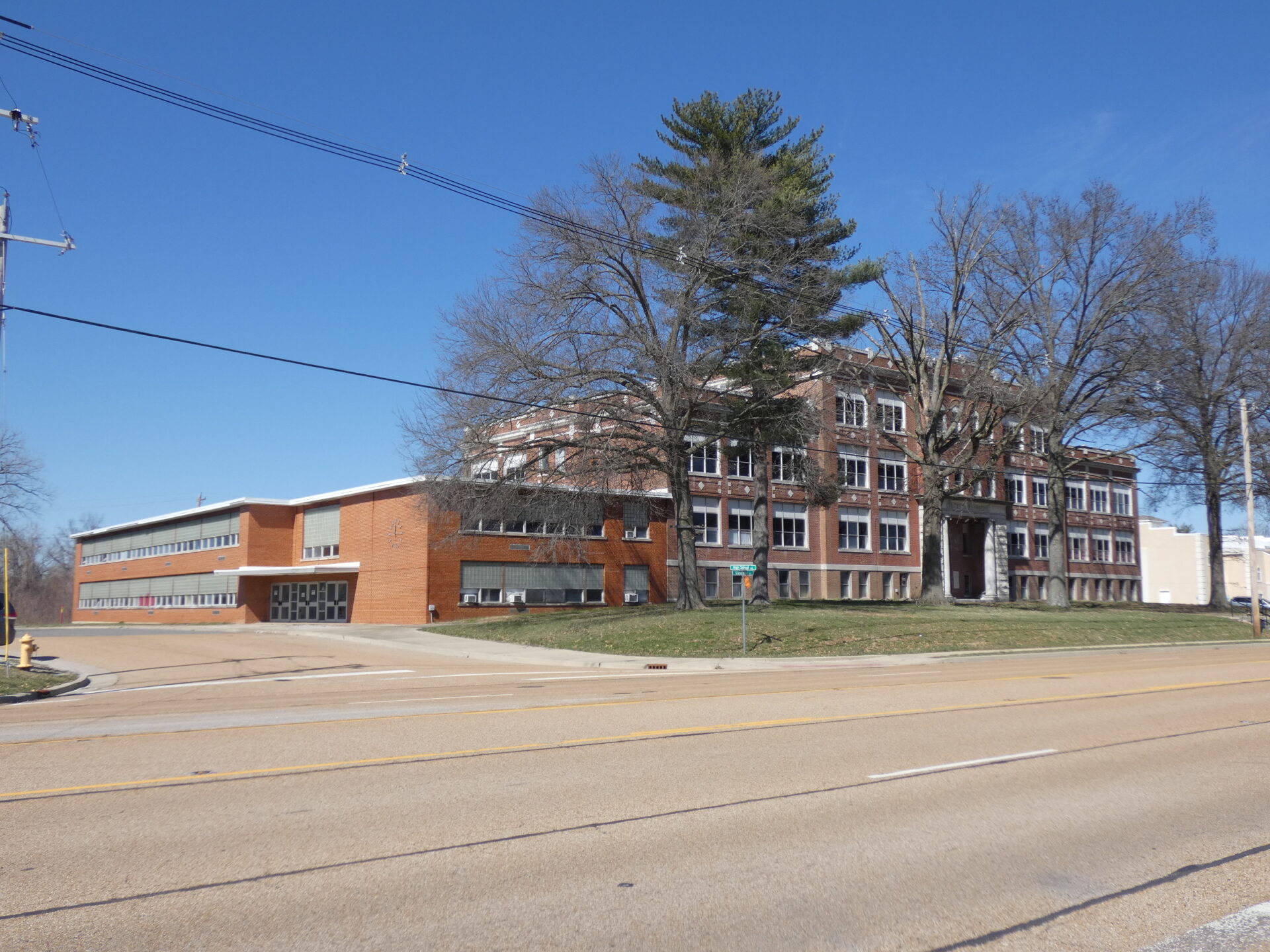Location
1203 Vandalia St.
Collinsville, Madison County
Year built
1908
Architect
John William Kennedy
Current owner
Celadon-Collinsville GP, LLC
(Photo credit: Gleason Architects)

1203 Vandalia St.
Collinsville, Madison County
1908
John William Kennedy
Celadon-Collinsville GP, LLC
(Photo credit: Gleason Architects)

Former Collinsville Township High School welcomed generations of students between 1908 and 1982, creating an extensive and active alumni network. Major additions to the building were constructed in 1922 and 1957. However, once the newly built Greenwood campus opened in 1971, the existing high school was repurposed into the Collinsville Area Vocational Center, serving students until 1982. Since then, the building has been used as a private academy and for storage. Though abandoned, the building is a prime reuse candidate as it is centrally located in Collinsville and close to transportation, shopping and employment.
(Photo credit: Gleason Architects)

The current owner has plans to develop the building into affordable housing and has identified funding and tax incentives to do so. Additionally, an independent market study suggests repurposing the school as a housing development is feasible and “redevelopment of the vacant high school building will be positive for the neighborhood.” Despite the owner’s adaptive reuse plan, local government officials are opposed to developing affordable housing in this area of Collinsville and will not approve the plan. It therefore continues to sit vacant and deteriorating in the middle of town as no other feasible reuse options have materialized.
(Photo credit: MacRostie Historic Advisors)

Since the owner has already acquired funding and incentives to turn the school building into affordable housing, one solution is for the Collinsville city council to approve the adaptive reuse plan. One of preservation’s greatest opportunities to be relevant to more people is to aid in increasing the supply of housing through adaptive reuse, and local leadership can both promote community history and ensure residents’ basic needs are met by approving more adaptive reuse projects. If Collinsville is truly unable to support the reuse plan as presented, then local officials should work with the owner to identify alternative uses so that the vacant school doesn’t continue to blight the surrounding residential neighborhood.
(Photo credit: MacRostie Historic Advisors)

(Photo credit: Gleason Architects)

“Historic schools are ideal candidates for conversions to housing. For better or worse, demographic trends have led to many schools to be closed or vacated; but that presents an incredible opportunity for developers to leverage state and federal affordable and historic tax credits to help pay for construction while also helping to address our state’s housing crisis. Unfortunately, some municipalities that have closed schools within their borders allow a misunderstanding of affordable housing to get in the way of reusing historic buildings. There needs to be more open dialogue between municipalities and housing advocates to discuss and work through concerns around affordable housing. Doing so will not only promote understanding, it will also help pave the way to save more of the state’s treasured historic buildings while also creating more desperately needed housing for Illinois’ workforce.”
(Photo credit: Gleason Architects)
Be a voice for the future of our communities by supporting Landmarks Illinois. Our work enhances communities, empowers citizens, promotes local economic development and offers environmentally sound solutions.